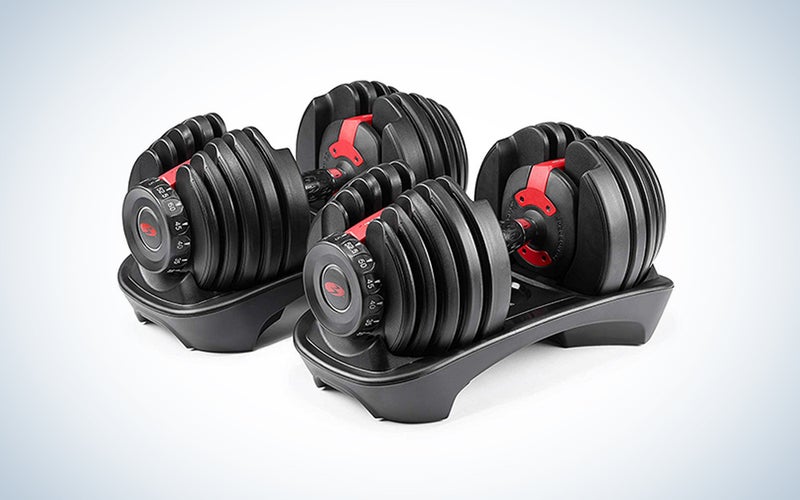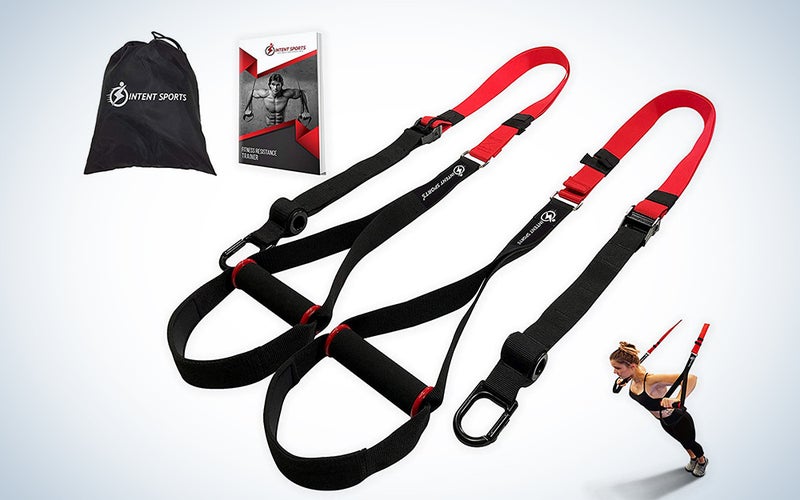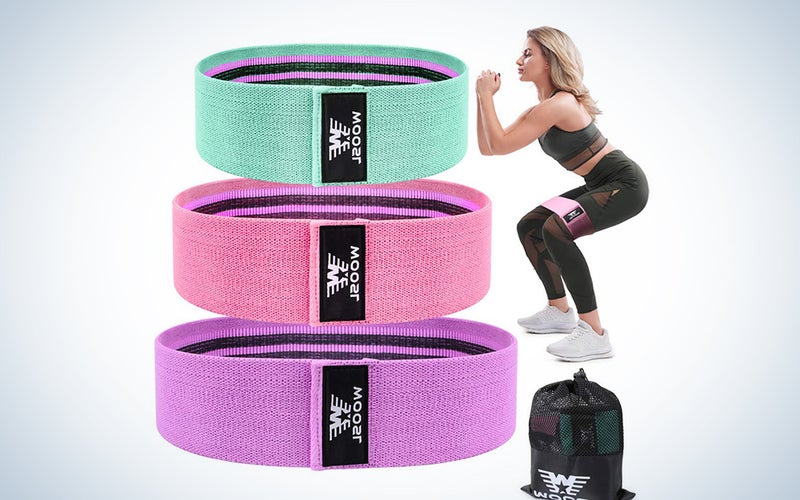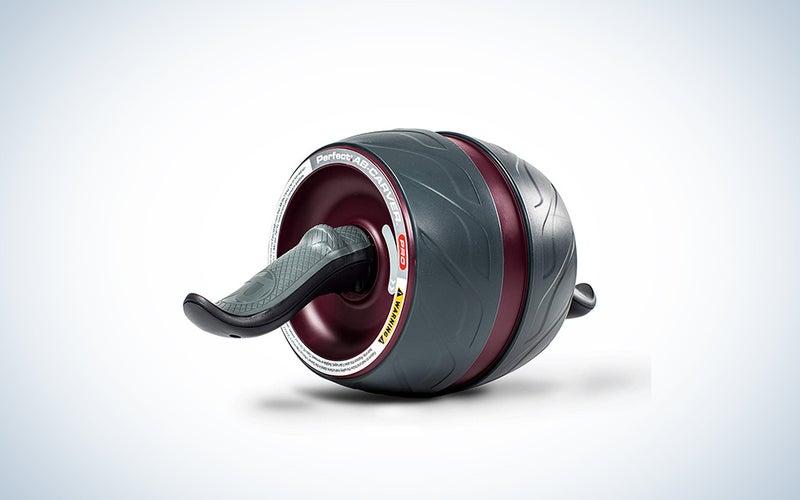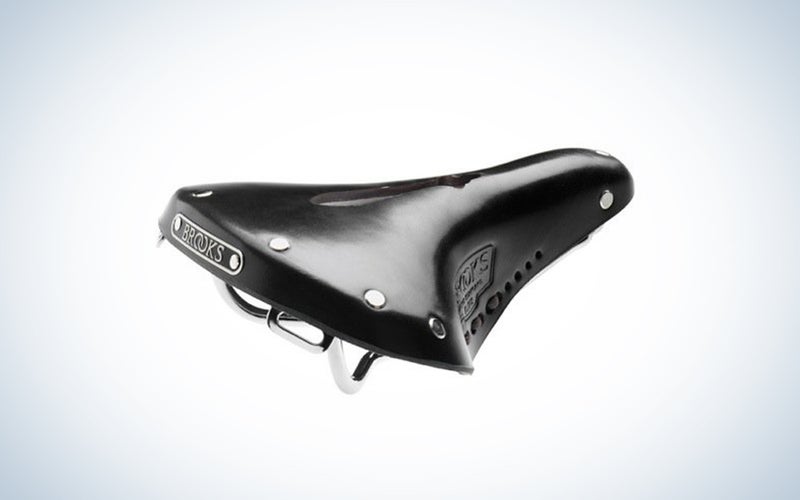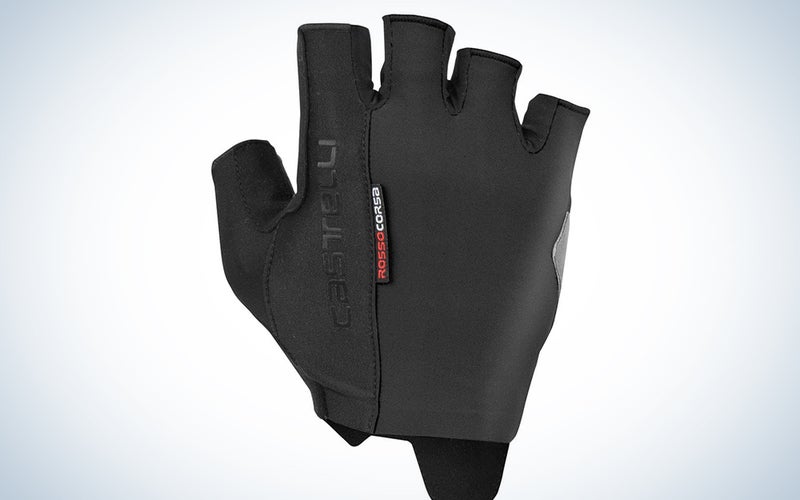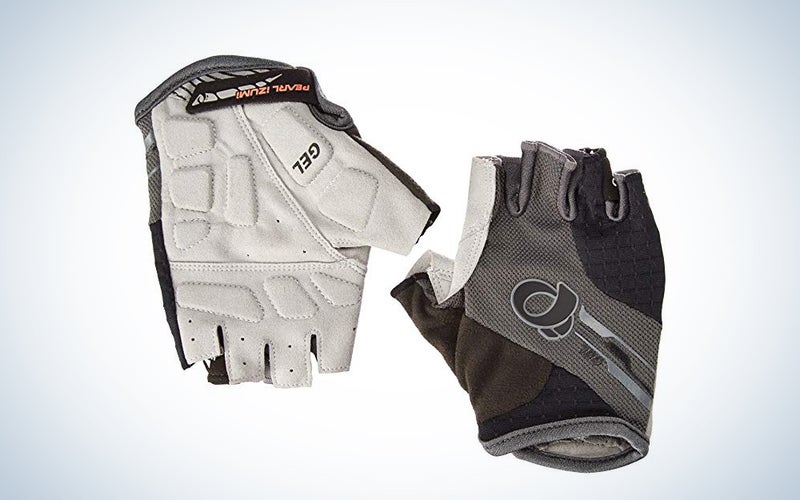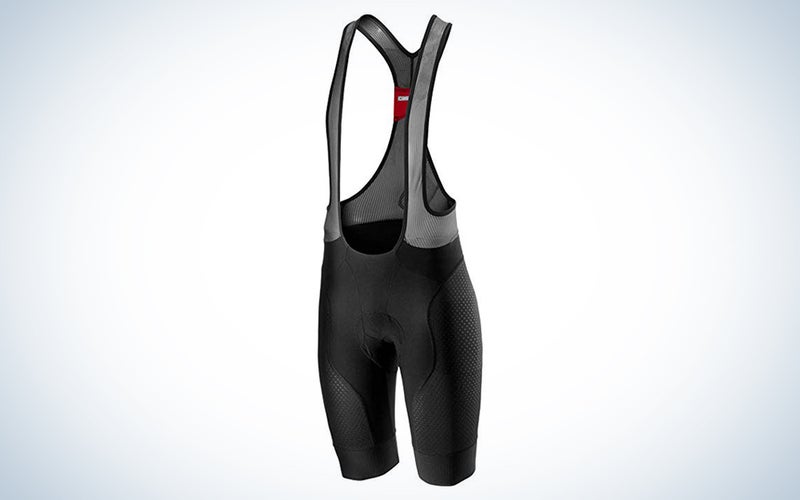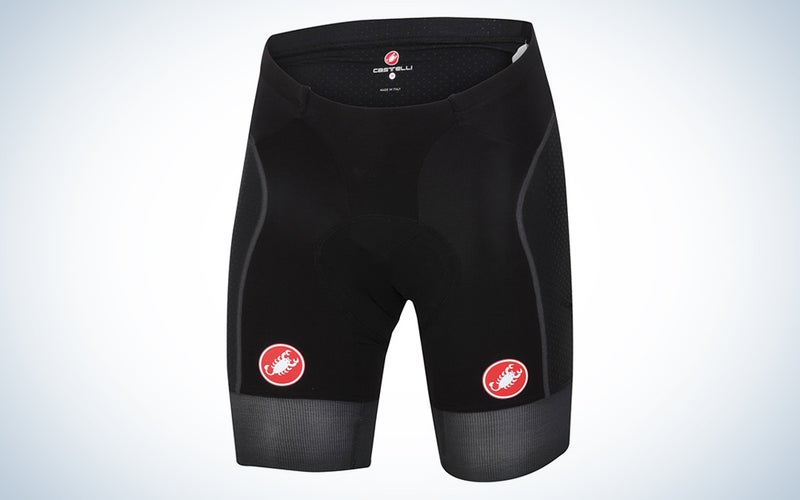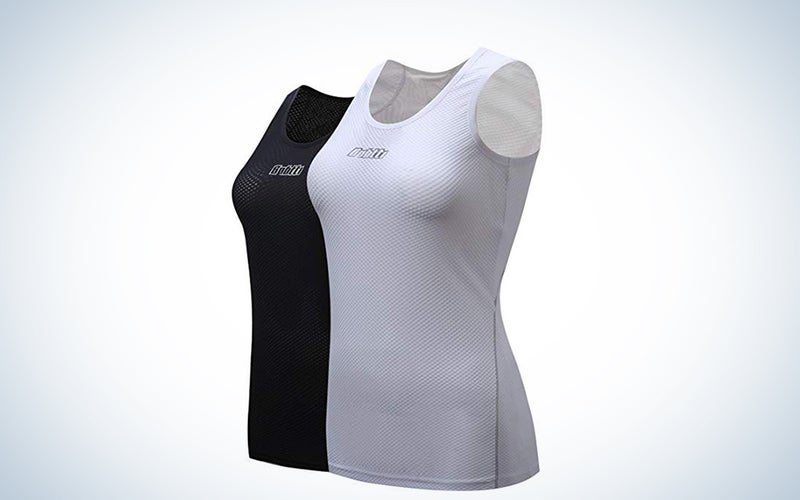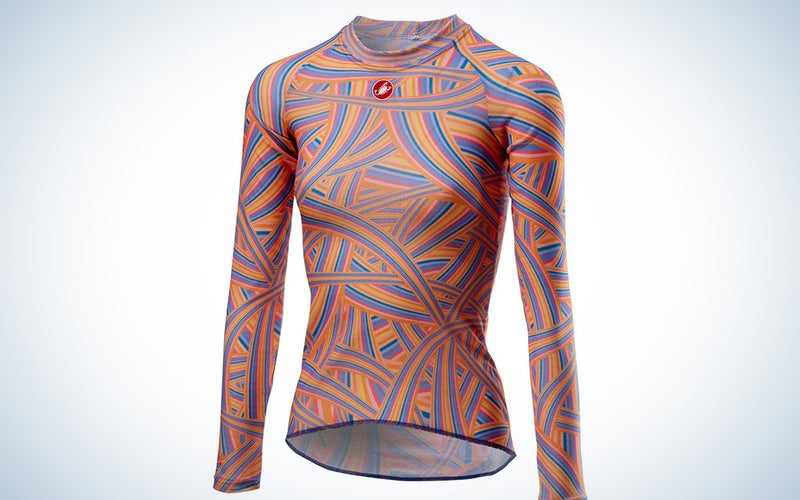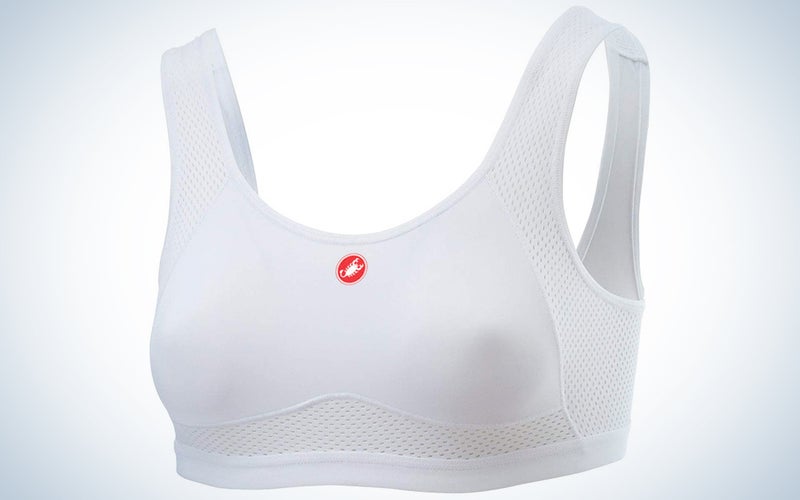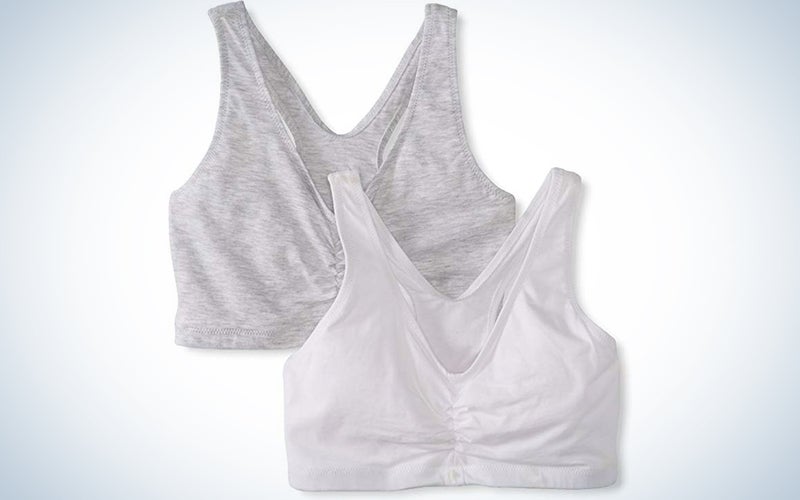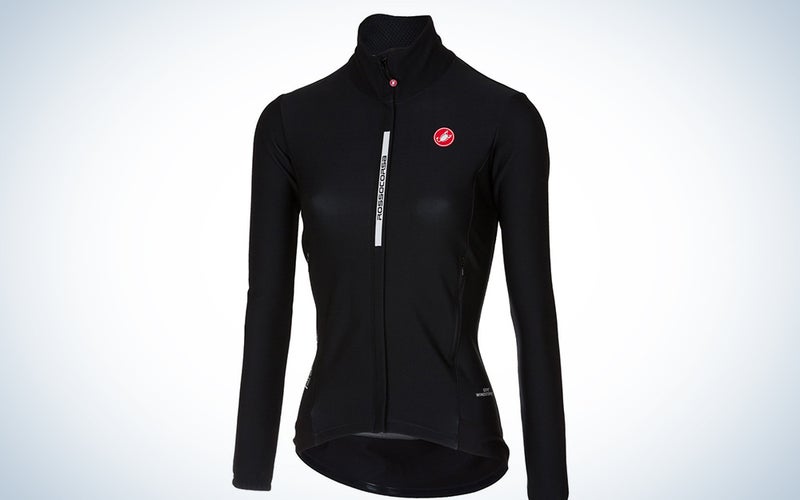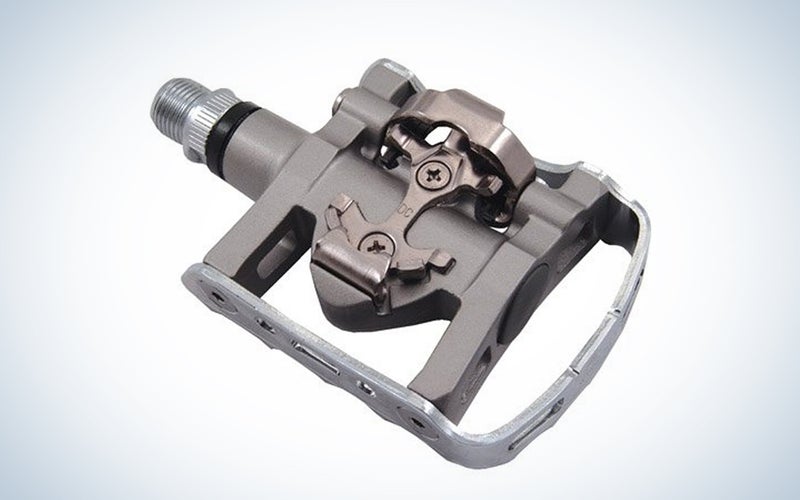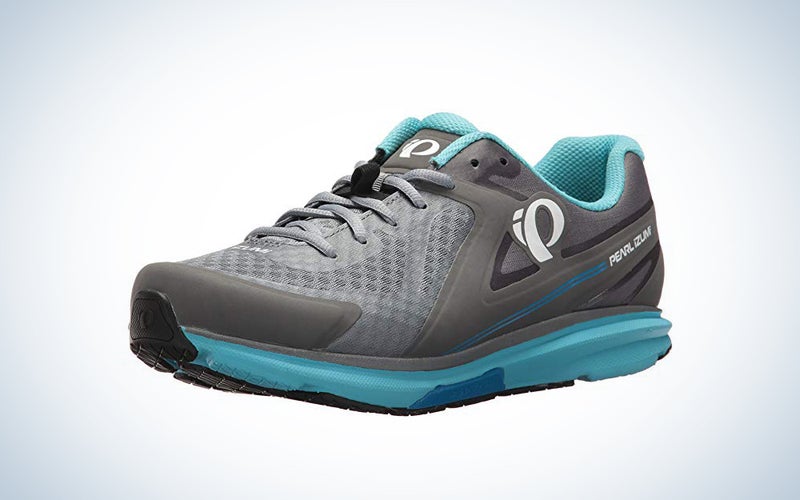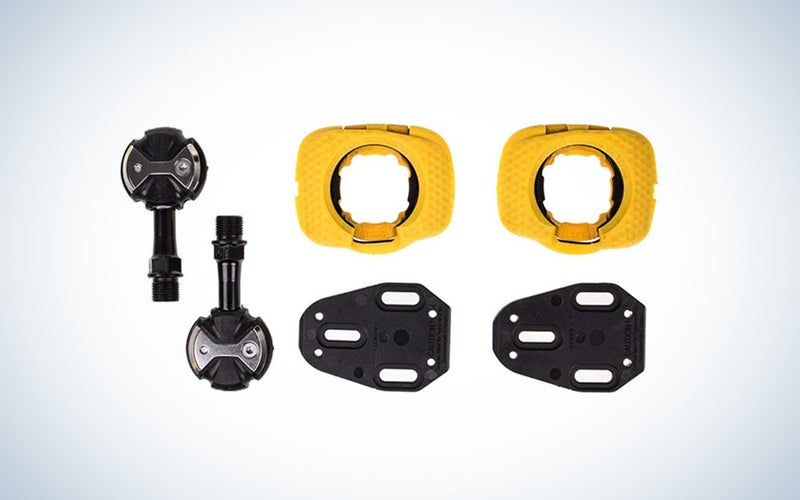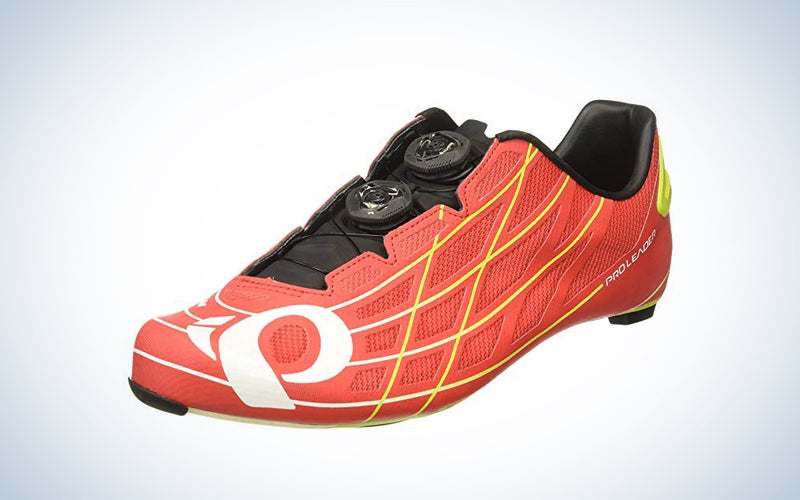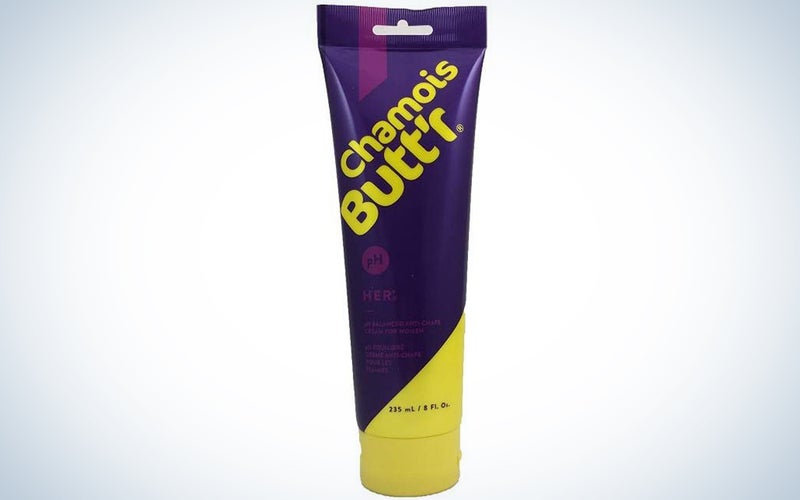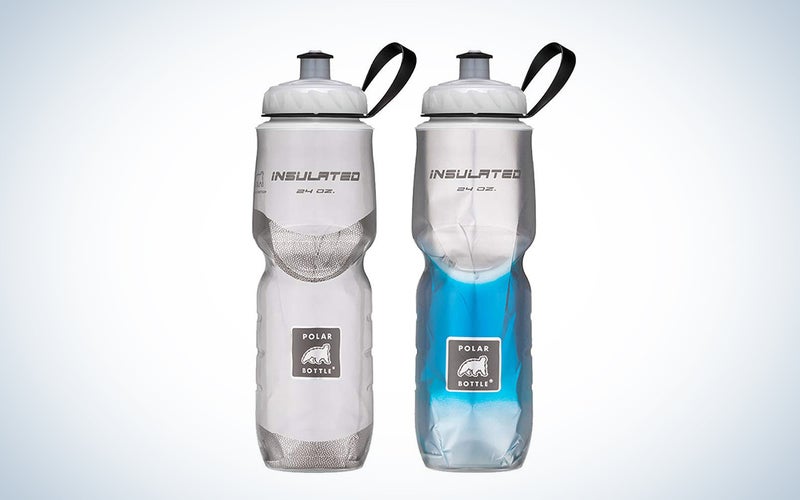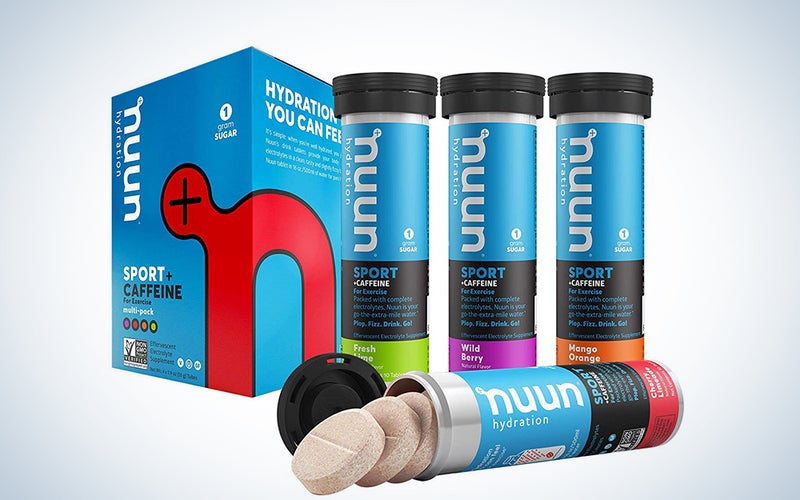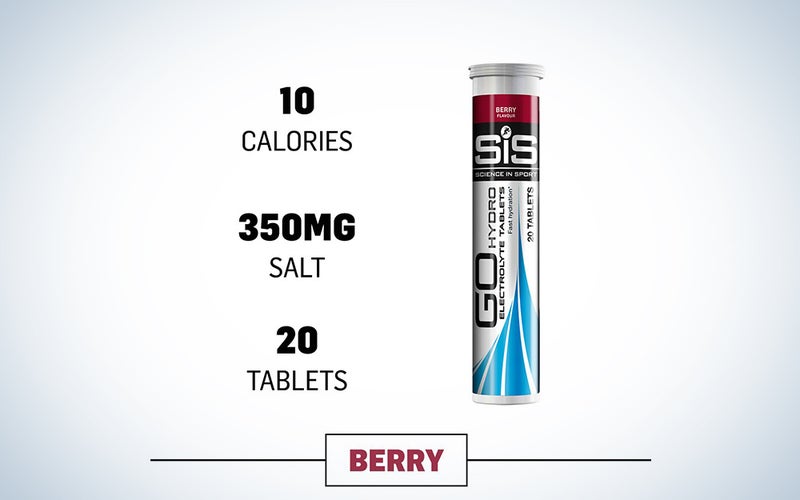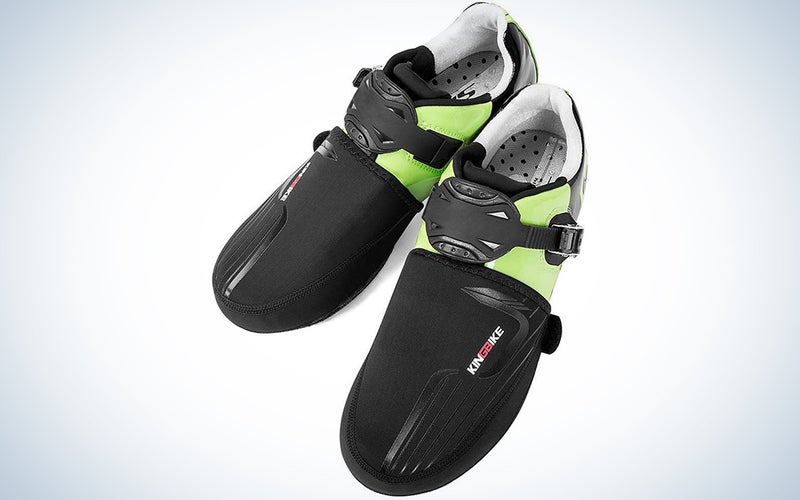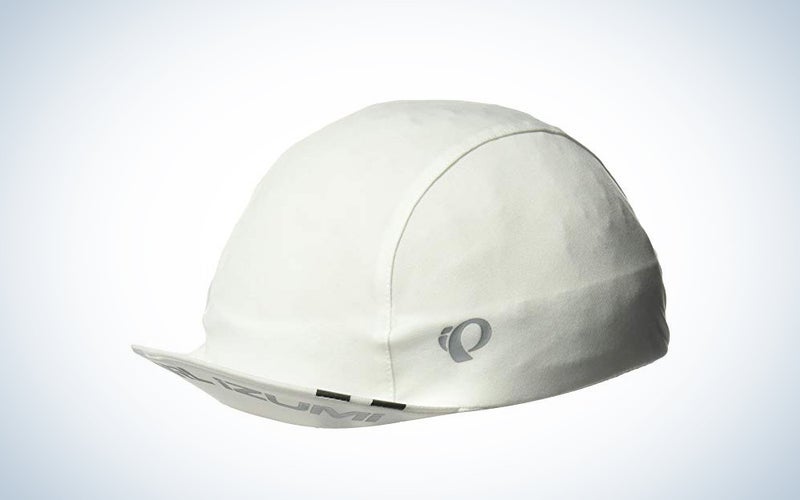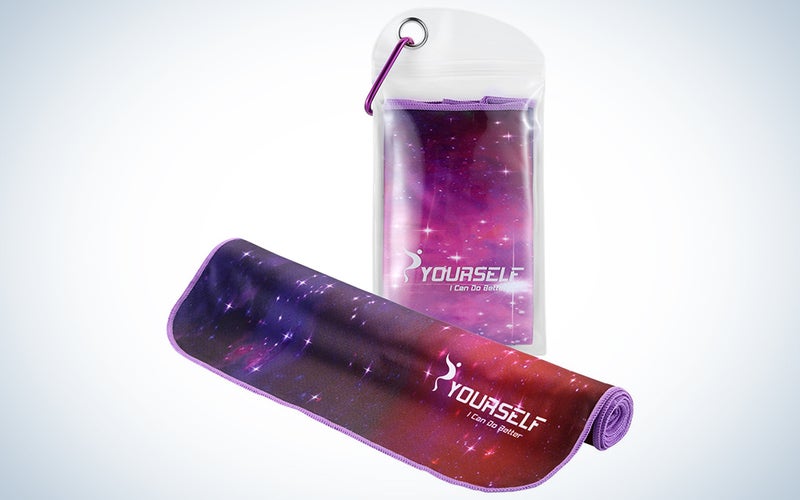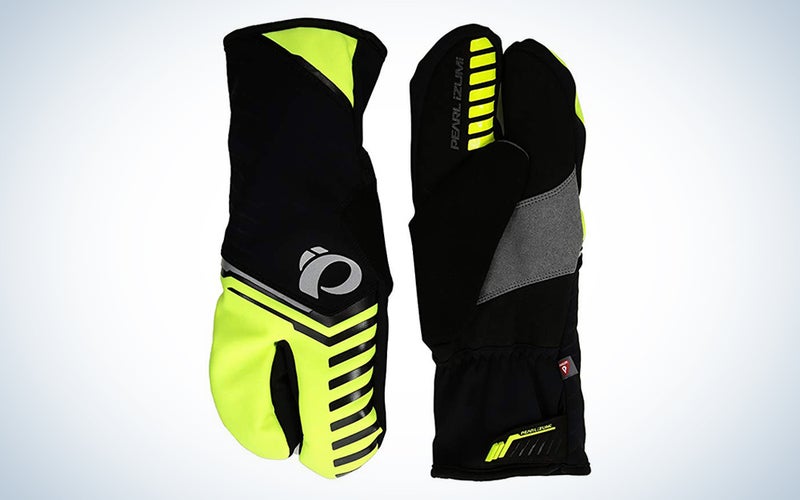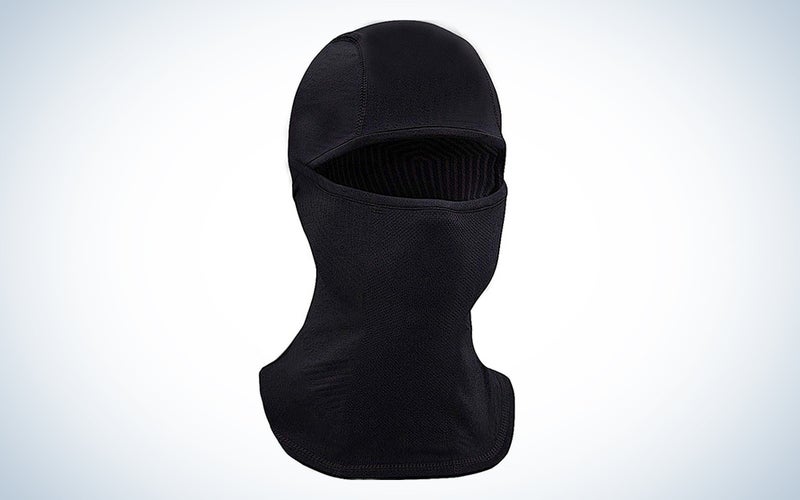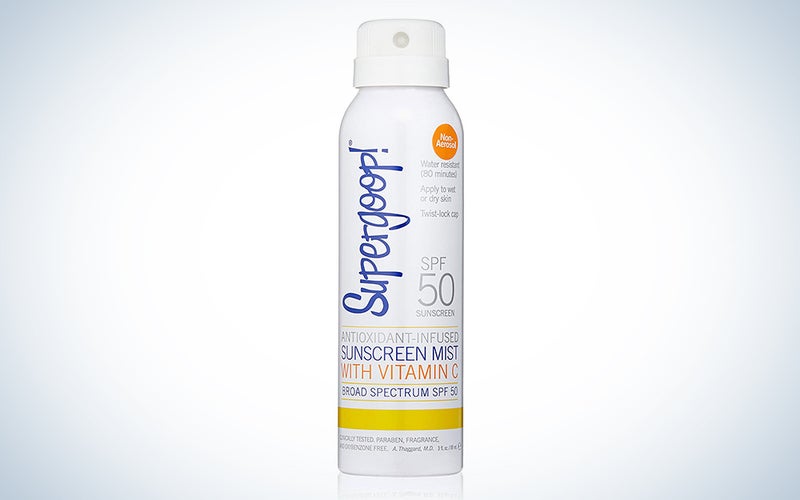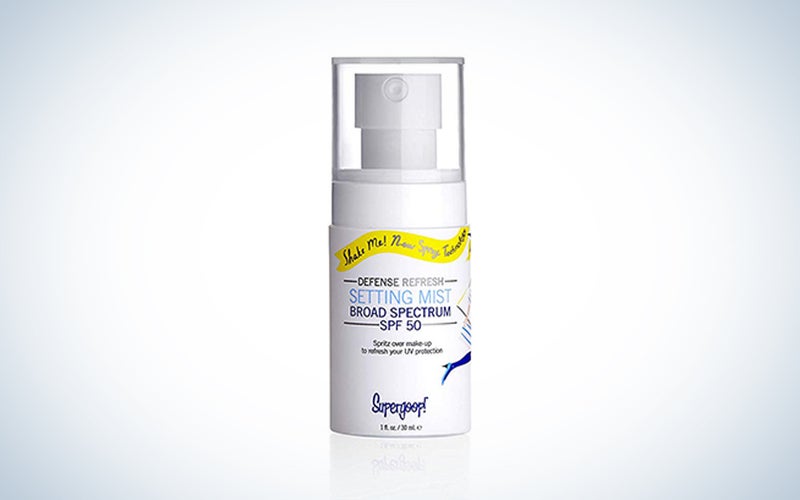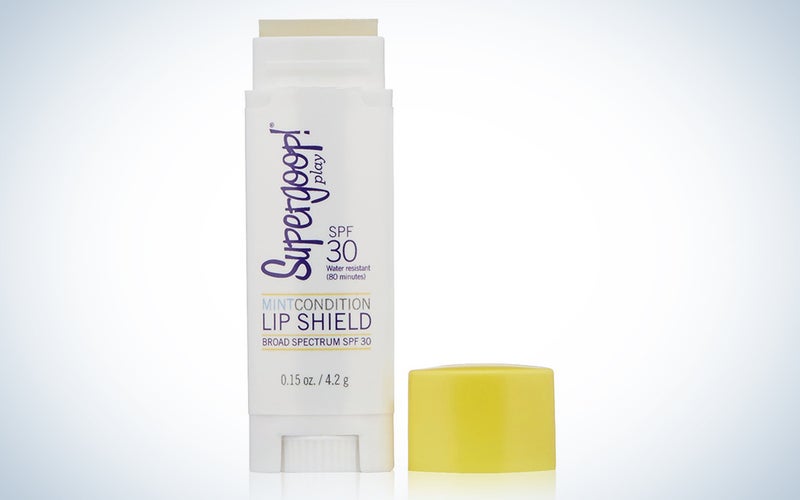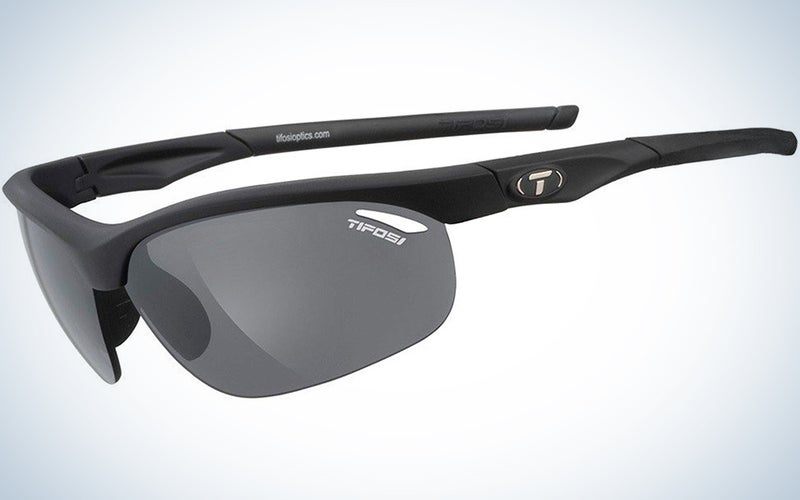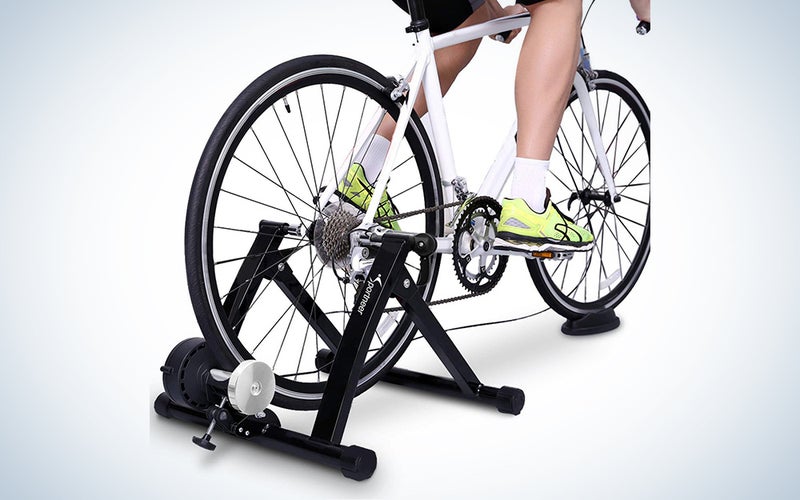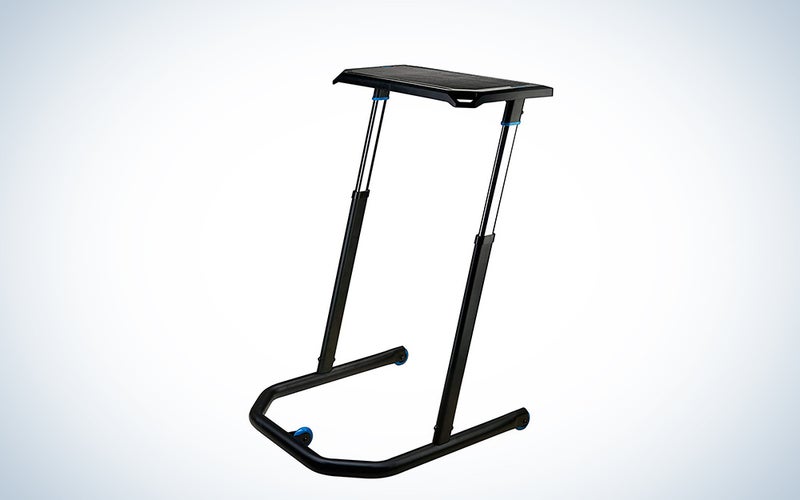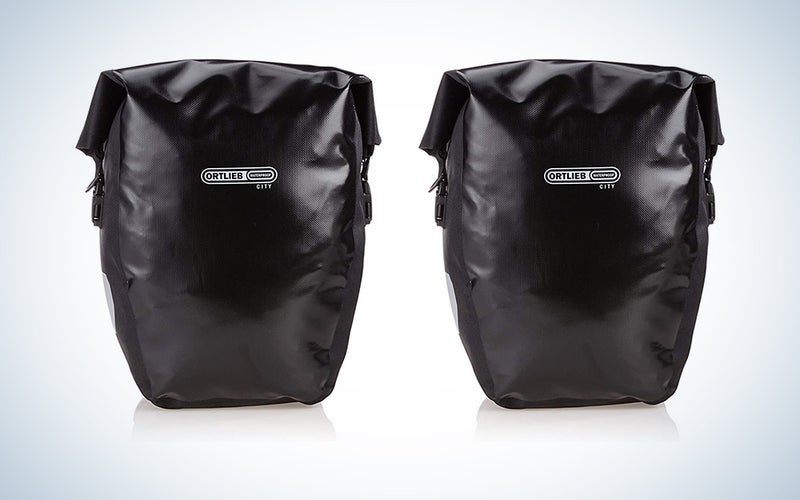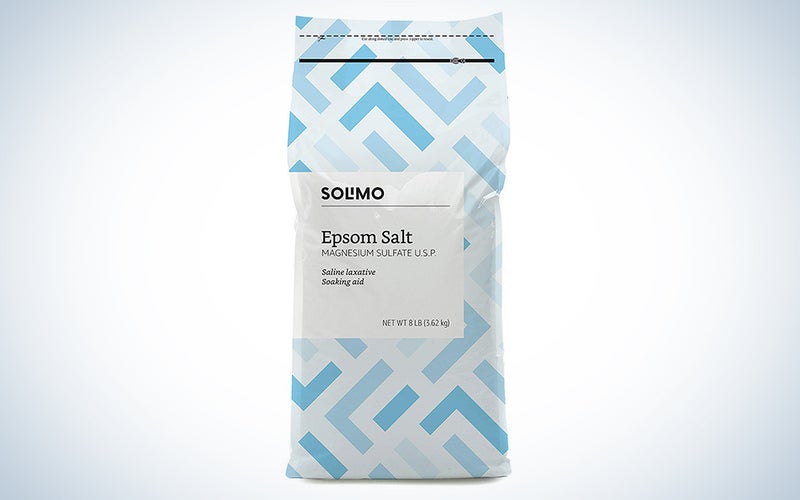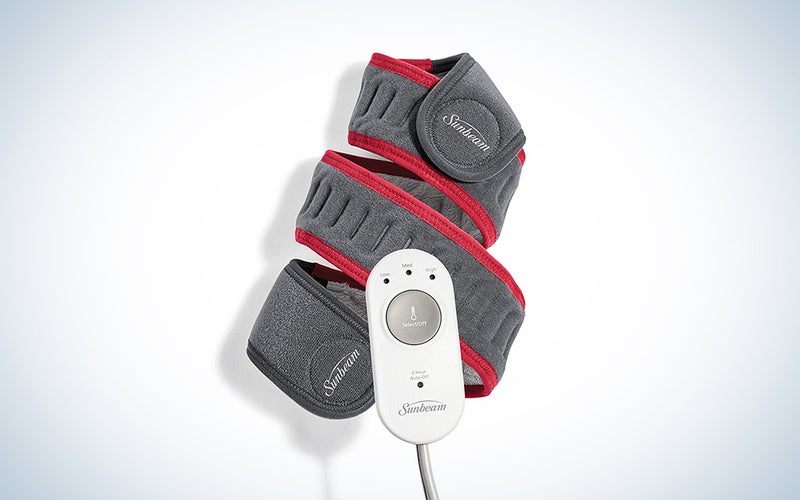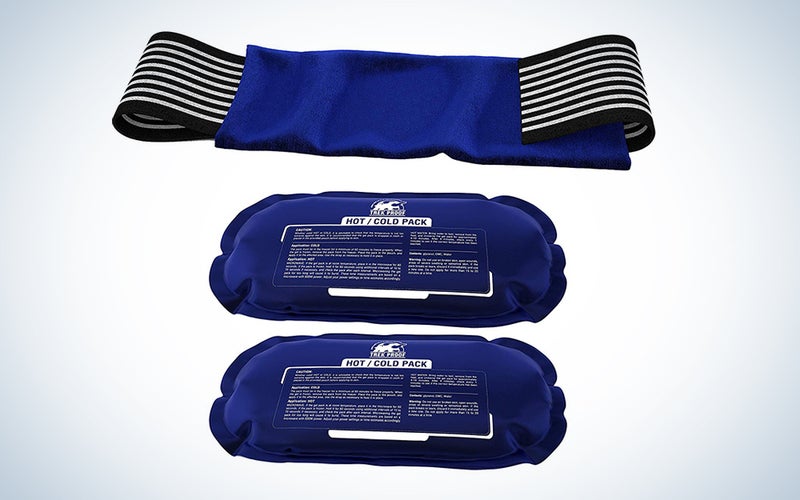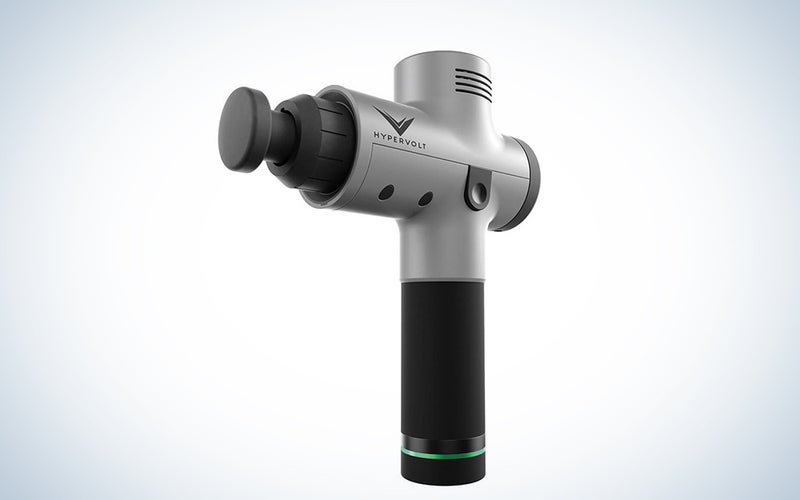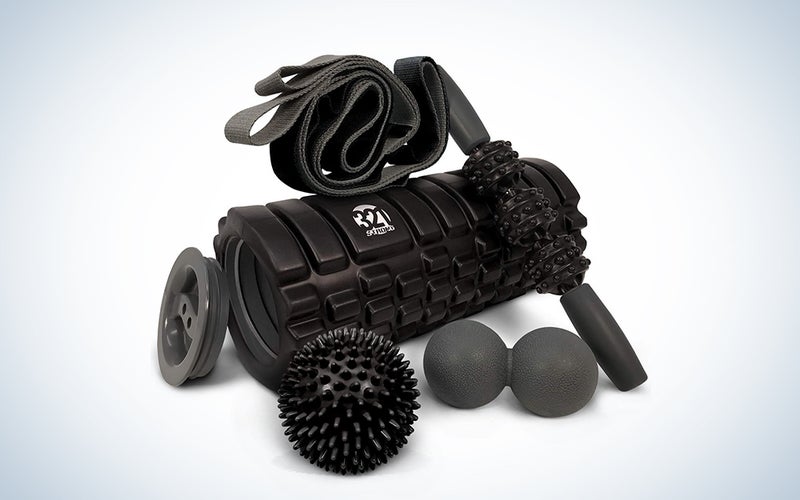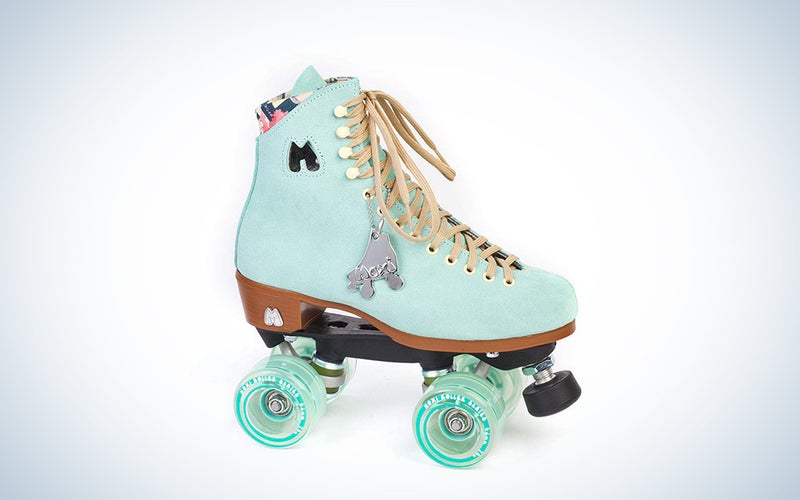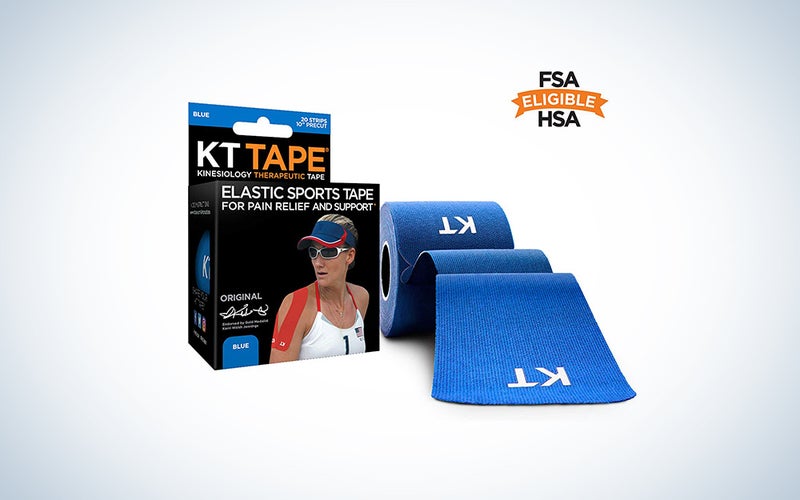I went from barely biking to doing a 545-mile ride in less than a year. Here’s the gear that helped.
The right stuff can be as important as the right attitude.
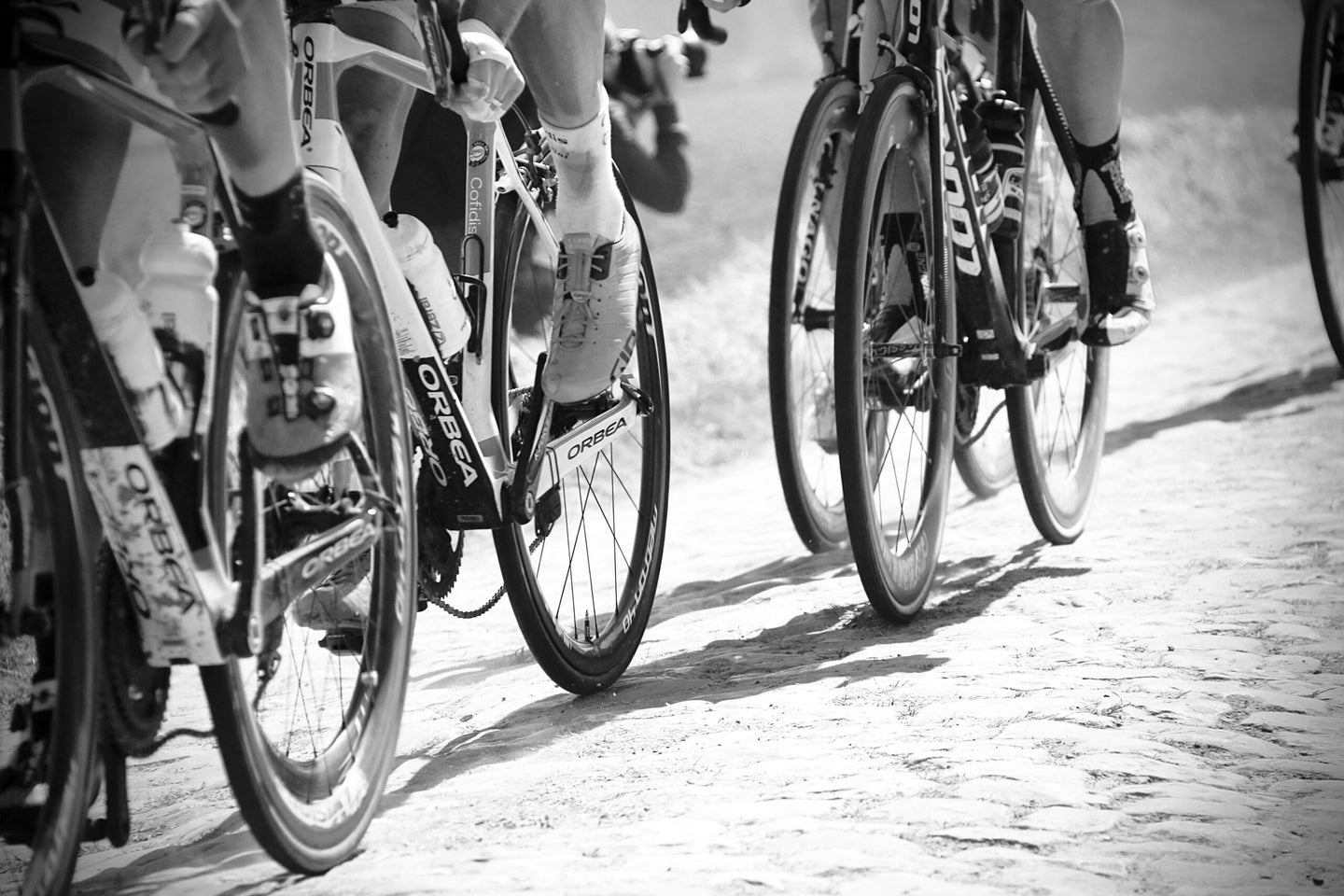
We may earn revenue from the products available on this page and participate in affiliate programs. Learn more ›
Cycling is really good for you. It builds muscle—not just the obvious ones in your butt and legs, but in your shoulders and abs, too—and increases bone density, which helps prevent osteoporosis and fractures. It also provides a great aerobic workout without putting a ton of stress on your joints, and gives you access to the physical and mental benefits of time in the great outdoors.
I grew up in a bike-crazed family, but it wasn’t until I got engaged to a velophile that the benefits really hit me. Here was a way to squeeze a workout and a commute into the same daily timeslot, avoid New York City’s ever-crumbling public transit infrastructure during rush hour, and enjoy the (relatively) fresh air of the Hudson River. And wait, there’s more: If you’re as whacky as the guy I’m marrying (who is bike-in-sub-freezing-weather-with-a-smile whacky) you can also use a bike to see—and save—the world. He’s a regular participant in the AIDS/LifeCycle charity ride, where thousands of cyclists raise millions of dollars by spending a week pedaling from San Francisco to Los Angeles. Sure, the physical reality of that endeavor might sound horrible. But a week spent outside doing nothing but moving your body and raising money for an amazing cause? That sounded great.
There was just one problem: I hated cycling and felt super unsafe and anxious while doing it, especially with traffic whizzing around me. And yet, in June 2019, I did indeed bike hundreds of miles to raise thousands of dollars for charity—with only a few months of training and a handful of quality tools in my arsenal.
Even if your goals are more modest than a whole week of endurance cycling, the tips I picked up can help you go from the most awkward thing on two wheels to an expert. Here’s the prep work and gear that got me where I needed to be.
Consider trying a tandem bike, a hand bike, or a recumbent bike
No product recommendations here, because a bike is a big purchase and one you should make in person, with lots of expert advice to guide you. But as you’re picking out your noble steed, don’t limit yourself to what you think of as “a regular bike.” I ended up doing my 545-mile ride on a tandem (yes, that’s a bicycle built for two) which is actually harder from a purely physical standpoint (trust me on this). But it allowed me to leave the steering to my partner, thereby setting aside my fear of accidentally careening into a car. We also came across several people on recumbent bikes and other modified rides during the big trek. None of these options are easier or lesser than a traditional bike, and if you have specific physical or psychological needs that a standard two-wheeler can’t address, don’t let anyone tell you hardcore cycling isn’t for you.
Strength training can turn you into a great cyclist before you even get on a bike
Here’s the biggest secret to my ability to go from not riding a bike to riding one down our nation’s second-longest state: I work out a lot. I know that might not be the hot tip you were looking for, but it’s an important one—and one that’s pretty easy to get in on.
Because I apparently only take on the most absurdly challenging fitness goals, I’ve spent the last couple years trying to get good enough on skates to play roller derby. The work I’ve done to get strong and be slightly less mediocre at skating all happened to line up really well with the muscles I needed for endurance cycling. So, what have I learned?
Cardio is fine, but strength training is key—and just a couple of tools can replace an entire gym
TRX-style bodyweight exercises are brutal (in a good way) if you do them consistently, and they’re a great way to build up all sorts of muscles while always (always!) improving your core strength and stability. Being comfortable on a bike for long periods of time is very much about posture and careful weight distribution, so working out by hanging off of a pair of straps in weird positions is way more applicable than it might sound.
Amazon
If free weights are more your thing, an adjustable dumbbell set is better than any machine at your local gym. Just start small and work up, spending lots of time on goblet squats and calf raises (for obvious reasons) and back and shoulder work (to help you stay strong and steady on your handlebars).
Amazon
Target your butt and core
Look, I can’t overstate how much of a headstart I had on biking thanks to all my hilarious attempts at skating, which requires you to spend pretty much all your time in a solid (or, in my case, kind of wobbly) squat. If you’re not sure you’ve ever managed to activate your glutes and don’t know how to start, I’d recommend trying out a butt-centric workout like Iron Cakes or Mari Easy Fitness.
Using thick resistance bands to target your glutes and hip flexors will help you pedal harder and help you prevent injury, and a good-old fitness roller will give you abs of steel—or at least abs of something other than jello.
Amazon
Amazon
Invest in the best bike saddle you can afford
Let me tell you something: Your butt is precious. And let me tell you something else: the road is not kind to a precious butt.
Newby cyclists are often seduced by plush and gummy bike seats, because cycling hurts. The hardest part of riding 100 miles isn’t the leg fatigue, but the butt angst. A fat, squishy saddle is fine if you’re only going to ride short distances and want to feel like you’re simply sitting in a chair the whole time. But if you have any kind of serious mileage in mind (or even just plan on making a reasonable commute on a daily basis), you should consider getting a leather saddle instead. Big squishy seats will feel nice at first, but given that they aren’t actually going to mold around your body, you’ll eventually get sore spots, chafing, and potentially even nerve damage due to pressure where it doesn’t belong. A leather saddle like one of Brooks’ classic models will feel super stiff when you first sit down (and take a long time to truly break in) but it’s going to slowly melt like butter to fit your bum with perfect precision.
If you’re looking for a vegan alternative and/or want something with a shorter break-in period that will still be kinder to your anatomy than a beach cruiser-style seat, Brooks has a rubber-and-cotton model that’s ready for comfy riding as soon as you buy it. The downside is that it will never completely conform to your body the way a leather seat will. But it has the added benefit of increased durability: A leather saddle needs to be shielded from sun exposure and rain to prevent cracking.
Amazon
If you don’t have a penis, most bike clothing isn’t made with you in mind. These brands are the exception.
Before we get into a general treatise on cycling wearables, let’s take a moment to discuss the chamois. This is the padding you’ll find packed into any bike shorts or bibs (which are shorts with suspenders attached to keep them from slipping down while you ride). Does it feel like you’re in a giant diaper? Yes. Is it important to wear one? Also yes.
The first bike shorts I used were from the REI bargain bin—and while they were from a big-name bike brand, they totally sucked. Luckily I have a family friend with a women’s cycling gear company called Evelyn Hill, and she told me all about the consideration she put into the chamois design in her bibs. My mom, an OB-GYN and bike enthusiast, gave me a similar spiel: Even if they carry women’s clothing, most cycling companies create their products with narrow hips and penises in mind. Vulva-havers can encounter a host of notorious problems on long bike rides, and dude-centric product design—in saddles, shorts, and even anti-chafing creams—is largely to blame.
All of this is to say that if you find yourself biking on a vulva, you should make sure you’re wearing a chamois that actually minimizes risk of pain and injury on the road. After trying shorts and bibs from all the heavy hitters of the cycling world, in addition to my friend’s company I found Wild Rye and Castelli to have the most innovative design.
And while we’re here, DO NOT WEAR UNDERWEAR WHILE WEARING A CHAMOIS. That will get you a one-way ticket straight to chaffing city.
Don’t be too frugal with your bike kit; quality clothes can make the ride
While you might be tempted to roll your eyes when a fellow cyclist rolls by decked out in top-of-the-line gear, a good bike kit (a.k.a. your riding outfit) can make any ride more comfortable. You should shop around and find the brands and products that work best for you, but here are some of the picks I landed on after lots of trial and error.
Gloves
I loved these little slip-on gloves from Castelli; they’re comfortable and sleek and don’t take up much room when stuffed in a pocket. But Pearl Izumi is a much more affordable brand on the whole and makes great gloves as well. Having ample gel padding in the right spots will help keep your hands feeling happy when you spend hours resting them on handlebars.
Amazon
Amazon
Bottoms
As stated above in the chamois section, Castelli was the only not-lady-centric bike brand I tried that really impressed me with its bottoms. Yes, Castelli is expensive, but the quality is so far beyond the next-best thing. Wearing clothes that support you, cushion you, and (literally) don’t rub you the wrong way is worth spending what you can.
Amazon
Amazon
Underlayer
Layers are good, especially when you’re going from opposing climes like the foggy Bay Area to sticky Los Angeles. Get a breathable undershirt to minimize sweating. All the bike clothing brands mentioned in this guide make great base layers, but when it came to hot-weather tank tops I found the cheap set I bought on Amazon held up just fine. By that, of course, I mean they were cheap enough that I wasn’t upset when I covered them all in grass and dirt and sweat in a matter of hours. Cycling can get messy!
Amazon
Amazon
Bra
When I first read the phrase “cycling bra,” I was intrigued but not optimistic. I already own a lot of sports bras, and I was sure that even if this bra from Castelli offered something different, it wouldn’t work for me. I was wrong! If you’re new to cycling and used to having to basically duct tape your chest down for other kinds of workouts, wearing something truly meant for low-impact sports can take some mental adjustment. Not only does the garment provide all the support a cyclist actually needs; it’s also infinitely more breathable than the kind I wear for cross-training or lifting. That means I’m way more comfortable at the end of a day-long ride.
Amazon
I wasn’t impressed with cycling bras from more affordable bike brands, but I found that a light sports bra from Hanes provided many of the same benefits for a lot less money.
Amazon
Jersey
It’s called the Perfetto for a reason. One Amazon review said this Castelli jacket “felt like it was part of her,” and I totally get it. It keeps you warm (but not too warm), dry, and comfortable in pretty much any conditions except totally freezing. I’m also a fan of the Alpha Ross, which features a zip-up inner layer; it’s a great way to quickly cool off a little without shucking a layer or having your coattails flapping in the breeze.
Amazon
While I’m still hoping to wear as much Castelli as possible until I die, Rapha comes closest to matching them in the jersey department. They’ve got a great variety of breathable and comfy tops for you to zip into before you zip off into the sunset.
Incognito bike-wear
Part of getting into cycling is getting used to actually using it as a mode of transportation. That means you’ll want to find clothes you can wear on the road that will also work for whatever activity you’re riding to. My favorites: Rapha has some great commuter-focused outerwear, Wild Rye makes super-strechy and adorable Bermuda shorts that can slip right over their chamois, and Betabrand has a whole line of “bike-to-work” pants designed to keep you comfy in the saddle and cute in the office.
Invest in an in-depth bike-fit session
Someone who gets into biking slowly is going to have more time to figure out all the little adjustments they have to make to their machine (and there will be a lot of little adjustments). But if you’re looking to ramp up your mileage quickly, or you’re just totally new to the bike world, it’s easy to get injured simply because your seat height or handlebar distance isn’t quite right. I found out the hard way that I really needed a good bike fit, where an expert will measure you and your bike and adjust everything that can be adjusted to optimize your ride position. I went to enduranceWERX after getting a bad knee injury that seemed pedal related, and they set me straight.
Play around with bike pedals and shoes until you find the right design
My knee injury turned out to have a lot to do with my pedals, so let’s talk about those for a second.
Good beginner options
One of the weirdest and most intimidating things for a new cyclist to learn is how to comfortably clip in and out of pedals. Most serious cyclists use pedals that lock onto the bottoms of their shoes, which provides the most power efficiency (since you can harness energy from the upward pull of your feet). But as a new cyclist, it’s a good idea to use platform pedals, where your foot rests on top instead of locking in. Quickly clipping in and out, which you’ll have to master to stop safely at intersections, takes practice, and it’s something you shouldn’t distract yourself with until you’re otherwise secure in your riding abilities. But how do you know when it’s time to make the switch? Luckily, there’s a solution: Reversible pedals. These babies give you the best of both worlds, with a flat platform on one side and clips on the other. You can start practicing clipping in and out on safe stretches of road while still relying on the simplicity of a platform for most of your riding.
Once you’re ready to make the transition, you’ll need footwear you can attach clips to. A pair of cycling shoes meant for commuting or mountain biking—which will be easy to walk in by design—will feel less alien than hardcore cycling shoes.
Amazon
Amazon
My favorite upgrades
There’s another catch to clipping in: It keeps your feet stuck in one position, which can be bad news for anyone with knee problems. It can also be bad news for people without knee problems, who may suddenly find themselves with—you guessed it—knee problems. I was in the latter group after developing a gnarly irritated IT-band that made it feel like my knee cap was in danger of popping off. Cute, I know.
But thanks to advice from an amazing physical therapist and, believe it or not, a ringing endorsement from avid cyclist Bill Nye, I made the switch to Speedplay pedals. These little circular clip-ins allow your feet to rotate slightly as you pedal, which is enough to keep your knees from getting stuck in a stressful situation. As part of that upgrade I switched to one of Pearl iZUMi’s more serious shoe models, which fit more securely on my feet, felt more aerodynamic, and didn’t have loose laces that could get caught in my pedals and gears.
Amazon
Amazon
Buy the right butt butter for you, and use a lot of it
Chamois cream, also known as butt butter, is so important. This goo serves to keep your skin slippery against the surface of your bike shorts, which minimizes friction and prevents chafing. If you’re riding for more than, say, an hour, and you go without butt butter, you’re probably going to make your skin very unhappy. It should go onto your chamois and/or the surrounding parts of your body before you ride; reapply it whenever you have the chance. As someone who kept up with adequate butt-butter coverage during a week where every single bathroom I used was a port-a-potty, I promise it’s worthwhile—and possible—to find the time and privacy to reapply.
As is the case with the chamois shorts themselves, butter is generally designed for people without vaginas, which tend to have different sensitivity and pH balance concerns than most parts of the body. Luckily, several companies make chamois cream for penises and chamois cream for vaginas. Get either, get both, just do what you gotta do for your bum (and adjacent anatomy).
Amazon
Stay more hydrated than you think you need to be when you bike
The loveliest cycling weather is a cool and crisp day in fall or spring, and it can be hard to remember to drink cold water when you get chilly everytime you stop pedaling. Don’t be a dummy: drink a ton of water. You should always have two insulated bottles on you and full when you head out for a ride (the insulation will come in handy once you’re riding in hot weather) and find some electrolyte tablets you like to make sure you don’t over hydrate. Yes, overhydration is a thing, and yes, it can kill you. Don’t worry: some of those electrolyte tablets even have caffeine in them. Yum!
Amazon
Amazon
Amazon
Be prepared to overheat, sweat, and get too chilly all on the same bike ride
It’s a good idea to set out for the day feeling a little bit cold, because as you exert yourself you’re going to warm up. But if you’re riding for more than an hour, layers are always smart. Specific weather concerns like wind and rain all come with their own solutions.
Shoe covers
These foot condoms will keep you warm and dry as the temperatures start to drop and the weather gets misty, which is something your cycling shoes will not do on their own.
Amazon
Warm-weather layers
Cycling in the summer heat doesn’t mean a tanktop is the way to go. You should wear sun-blocking arm and leg covers to protect your sensitive skin, and get a breathable cap to pop under your helmet. I really loved Castelli’s lightweight windbreaker vest, which provided a layer of wind and rain protection without adding much warmth (and packed down to pretty much nothing if I wanted to shed it).
Amazon
I’d also like to talk about these dumb little cooling towels. I got one for free at the start of my charity ride, and decided to keep it just to avoid throwing away a piece of fabric. I did not expect to want to wear a giant bandana designed to be soaked in water before use. Then we had a day where the heat index was above 100 degrees, the 70-mile route basically had zero shade, and we had to conquer a hill dubbed “the quad buster.” At some point, I wound up with an extremely wet bandana tied around my face. I loved it so much I used it for the rest of the week.
Amazon
Cold-weather layers
Sometimes it’s cold. Castelli’s super-fuzzy leg and arm warmers allow you to keep wearing a lot of the same gear year-round, though lined bib tights are an option as you get into truly frigid temperatures. A thicker jacket is a great layer to start the day with while your body warms itself up, and a balaclava will keep your face safe from icy winds while also prepping you for an impromptu bank heist if you run low on funds. Finally, if you’re riding on a really cold day, consider the lobster (gloves). Keeping more of your fingers together means they’ll share their body heat and keep the inside of your gloves toasty, and you can do everything you need to do on a bike with just two giant fingers and a thumb, anyway.
Amazon
Amazon
Wear plenty of SPF and bring sunglasses on every single ride
You’re outside, dummy.
Sunscreen
SuperGoop is an SPF-centric company I’ve been very impressed with lately, as their line keeps creating the kind of sunscreen products you don’t realize you needed until you see them on the shelf. A misting sunscreen makes for easy application throughout the day, while the brand’s setting spray is a great way to quickly freshen up facial coverage at a stoplight. Don’t forget protection for your lips!
Amazon
Amazon
Amazon
Sunglasses
I always assumed the fancy looking sunglasses I saw on cyclists were pretty much the same as any other pair of shades. I learned how wrong I was the first time I tried to wear the pair I bought for five bucks at Claire’s five years ago. Tifosi glasses stay on your face no matter what, don’t get all pokey under your helmet, and come in at least a few colors that won’t make you look like a total dork. And they’re not just for super-glare-heavy days; they also serve to block out wind and rain, so they’re worth bringing on every ride.
Amazon
Increase the length of your rides incrementally
I had worked my way up to 60 miles at a comfortable stretch before the dead of winter made me take a bit of a break, and it was when I jumped back in right at 25 miles in the spring that I messed up my knee. Don’t do that.
When you’re training for a long bike ride, data is your best friend
Avoiding overtraining can be as simple as writing your mileage down and being kind to yourself, but that doesn’t mean technology can’t help. A good bike computer will help you keep tabs on your routes and your cadence, and you can even use an AI-assisted program like VeloPro to tell you exactly how much mileage you should add or subtract for each ride.
I didn’t actually use the Whoop Strap 3.0 while training for my charity ride, but it would have been a huge help. The Whoop tracks your heart rate variability, which helps reveal how hard your body is working, and the accompanying app tells you how much strain you’re putting on yourself every day. Whoop will yell at you if your sleep habits don’t adequately support your workout regimen, and will point out if your heart rate or injury frequency suggests you’re overdoing it (or under-doing it) with your training.

Indoor bike trainers can help, but there’s a catch
Your bike doesn’t have to live outside: indoor trainers allow you to turn your road warrior into an home cycling studio. The Kickr is a fantastic option, and it integrates beautifully with the virtual cycling app Zwift and Wahoo’s whole suite of heart and cadence monitors. If the weather is bad or you simply can’t leave home, having this set-up (or any one of the many far cheaper bike trainers out there) can help you build up endurance and keep your muscles and sit-bones ride-ready. Wahoo even offers an adjustable standing/cycling desk so you can work while you’re working out.
One quick caveat here: Overdoing it on my trainer while working from home definitely contributed to the development of my knee injury. Remember that indoor mileage still counts as mileage. Be nice to your knees!
Amazon
Amazon
Fuel your bike ride with smart food choices
Biking burns a lot of calories. Bring snacks. I ate roughly 500 of these between San Francisco and Los Angeles. You can pick your own snacks; I’m not your dad.
Make your first really long bike rides as fun as possible
A training ride doesn’t have to feel like a slog; chances are if you do a bit of Googling you can find out where cyclists in your area like to hang out and eat on the way to and from the best destinations. Getting a good set of bags from Ortlieb will help you pack for a whole day (or weekend!) of cycling adventures—and give you a place to stow goodies you get along the way.
Amazon
Dedicate time and resources to muscle recovery (treat yourself like an athlete—you are one!)
It isn’t just about the time you spend on your bike. The time you spend off it is just as crucial. Making sure you take plenty of rest days and looking after your physical health is the best way to skyrocket in terms of cycling ability.
Bubble baths
A good Epsom salt soak (with or without added bubbles) is crucial for relaxing your muscles and easing the pain of your poor sit bones.
Amazon
Stretching
I’m swooning just thinking about getting a good calf stretch right now. Stretch before and after every ride, and get in the habit of stretching every morning when you wake up.

Hot+Cold
Ice those sore spots ASAP, and treat yourself to some soothing heat if you’re experiencing second- (or third- or fourth-) day aches and pains.
Amazon
Amazon
Rollers and guns
You should give your body a good foam roll whenever you’re doing a stretching session. Foam rolling helps break up the tough fascia that create muscle knots and pain, and really digging into the sore spots will pay off in the long run. For a high-tech shortcut, use a device like the Hypervolt to pound your muscles straight into submission in seconds.
Amazon
Amazon
Cross-training will help with any fitness goal
We build muscle by causing muscle damage, but that only works if we let our damaged muscles heal. That means you have to take days off from training. But that doesn’t mean every rest day has to be spent laying on the couch: consider trying out other low-impact sports that work different muscles, or that use the same mechanics as cycling but with less intensity. Cruising around your local roller rink for a few laps is a fine option, as is going for a swim or taking a yoga class.
Amazon
Go to physical therapy before you think you need to go to physical therapy
My bike training adventure marked the first time I ever went to physical therapy without being ordered to do so by a doctor, and it also marked the first time I truly committed myself to following all my physical therapist’s instructions. The result? I graduated after just a few sessions and actually recovered from my injury in a matter of weeks. I saved myself loads of time, money, and pain simply by being proactive and taking my recovery seriously, and I’ll never be lazy about addressing aches and pains ever again (probably).
Every serious athlete is held together with kinesiology tape and hope
Of course, not every bodily complaint is going to vanish with the help of a few stretches. That’s where the magic of KT tape comes in. The internet is full of advice on how to cut and place this stuff, which supposedly lifts the skin and fascia and muscle in therapeutic ways. Does that actually happen? The evidence is super murky, and the answer is probably “maybe-kinda-a-little,” but there’s a reason you’ll find kinesiology tape in loads of reputable physical therapy offices and on the skin of many an elite athlete: for lots of people with lots of types of muscle pain, it just works. We may not know how much of this is a fantastic placebo effect and how much is a result of tiny influences on your body’s tender tissues, but it’s absolutely worth trying. If nothing else, covering yourself in an intricate array of tape deployed in a design of your own making will make you feel like you’re doing something about your pain, which can go a long way towards alleviating it.
Amazon
But remember: if you find yourself spending one morning after another taping up tons of sore spots, it’s probably time to go talk to an expert. No hobby is worth wrecking your body for, because you only get one.
